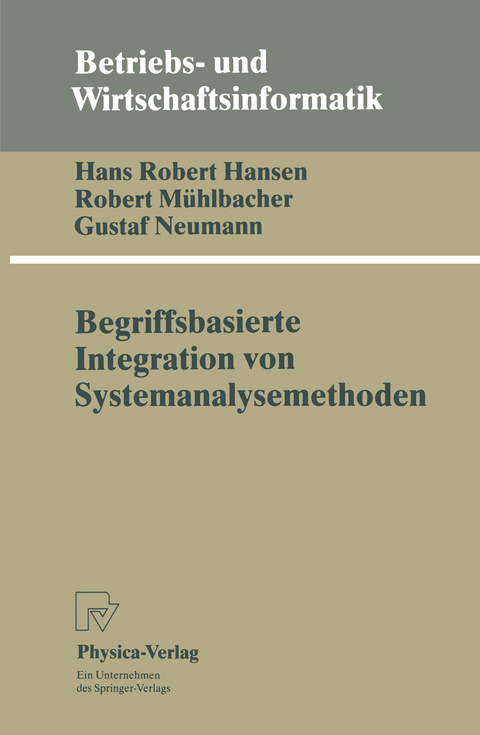
Begriffsbasierte Integration von Systemanalysemethoden
Physica (Verlag)
978-3-7908-0653-3 (ISBN)
I Begriffsbasierte Integration von Systemanalysemethoden.- 1 Begründung.- 2 Klassifikationsschema.- 3 Interpretationsmechanismus.- II Überführung von ER-Modellen in begriffliche Graphen.- 4 Konstruktionselemente von ER-Modellen.- 5 Kompilation eines ER-Modells in begriffliche Graphen.- 6 Extraktion eines ER-Modells.- 7 Implementation der Überführungsregeln in Prolog.- III Überführung von NIAM-Modellen in begriffliche Graphen.- 8 Konstruktionselemente von NIAM.- 9 Kompilation eines NIAM-Modells in begriffliche Graphen.- 10 Extraktion eines NIAM-Modells aus begrifflichen Graphen.- 11 Implementation der Überführungsregeln in Prolog.- IV Überführung von Datenflußdiagrammen in begriffliche Graphen.- 12 Datenflußdiagramm.- 13 Kompilation.- 14 Extraktion.- V Überführung von Remora-Modellen in begriffliche Graphen.- 15 Die Methode Remora.- 16 Kompilation eines Remora-Modells in begriffliche Graphen.- 17 Extraktion eines Remora-Modells aus begrifflichen Graphen.- 18 Implementation der Überführungsregeln in Prolog.- VI Überführung von SF-Modellen in begriffliche Graphen.- 19 Die Spezifikationssprache SF.- 20 Entsprechungen für SF-Konstrukte in begrifflichen Graphen.- 21 Übersetzung eines SF-Segments in begriffliche Graphen.- 22 Entsprechungen für SF-Konstrukte in begrifflichen Graphen.- 23 Übersetzung begrifflicher Graphen nach SF.- 24 Begriffliche Basis.- Abbildungsverzeichnis.
| Erscheint lt. Verlag | 15.12.1992 |
|---|---|
| Reihe/Serie | Betriebs- und Wirtschaftsinformatik |
| Zusatzinfo | XXVI, 436 S. |
| Verlagsort | Heidelberg |
| Sprache | deutsch |
| Maße | 155 x 235 mm |
| Gewicht | 700 g |
| Themenwelt | Informatik ► Office Programme ► Outlook |
| Informatik ► Theorie / Studium ► Künstliche Intelligenz / Robotik | |
| Mathematik / Informatik ► Mathematik ► Finanz- / Wirtschaftsmathematik | |
| Wirtschaft ► Allgemeines / Lexika | |
| Schlagworte | data structures |
| ISBN-10 | 3-7908-0653-6 / 3790806536 |
| ISBN-13 | 978-3-7908-0653-3 / 9783790806533 |
| Zustand | Neuware |
| Haben Sie eine Frage zum Produkt? |
aus dem Bereich


